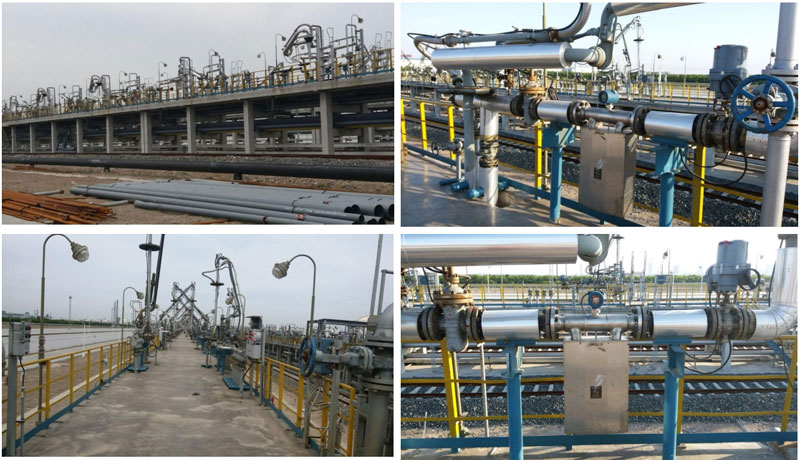
A Coriolis flow instrument harnesses natural forces leveraging centrifugal dynamics to assess volumetric rates. While fluids traverse bent channels, torque effects provoke changes in flow trajectory, proportional to volumetric rates, permitting accurate flow analysis. Famed for their multi-application ability, suitable for various flow materials with reduced pressure disturbance.
- Merits of Coriolis Flow Meters:
- High fidelity measurements:
- Versatile fluid handling:
- Simultaneous density & viscosity assessment:
Mastering Coriolis Flowmeter Theory
Innovative Coriolis meters act as effective gauges built for evaluating flow inside pipelines. Exploiting Coriolis force mechanics, deflections in fluid trajectory inform measurements. Within rotating pipes, fluid trajectory undergoes lateral shift, dependent on flow orientation. Measurement units discern deviations, turning deviations into measurable outputs scaled to mass transfer.
- Roles of Coriolis flowmeters include:
- Operational measurement in natural resource sectors
- Food processing
- Water purification
Selecting Best Coriolis Instruments
Coriolis meters excel in providing precision for fluid flow analysis. Yet, with several alternatives of available models, opting for the best fit for applications may be involved. Key considerations when purchasing your Coriolis flow meter include: * **Characteristics of the fluid:** The fluid monitored impacts makeup and performance. * **Flow capacity range:** Meters run within distinct flow limits. Ensure your needs are met. * **Accuracy standards:** Different use cases ask for diverse precision levels. Determine these to filter models. * **Operational environment:** Factors such as temperature, pressure, and fluid viscosity change meter outcomes. * **System compatibility:** Assess integration and linking with existing infrastructure.Strengths of Modern Coriolis Meters
Innovative Coriolis technologies provide a large assortment of values for industrial needs. Fundamentally, these meters offer unmatched accuracy, facilitating precise throughput analysis. Further, Coriolis meters provide simultaneous fluid composition analysis in one device, allowing them particularly suited for complex measurement. Furthermore, their resilience enables operation in adverse environments.
- Therefore, these devices see common use in markets like oil and gas, chemicals, food and beverage sectors, and pharmaceuticals.
Sophisticated Procedures in Coriolis Meter Adjustment
High-standard industrial applications prioritize Coriolis flowmeter performance. Ensuring dependable, repeatable results demands cutting-edge calibration methods. These exceed basic protocols by integrating dedicated gadgets and detailed analysis.
Using certified standards enables precise calibration. By comparing meter outputs with known benchmarks, technicians detect discrepancies and apply corrections.
- Multi-point calibration, assessing various flow rates, yields comprehensive performance profiling across meter ranges.
- Advanced software assists data management and visualization, enabling calibration curve creation.
Consistent use of advanced calibration ensures optimal meter accuracy, driving process refinement across industries.
Troubleshooting Frequent Meter Issues
Coriolis meters provide trusted accuracy and adaptability yet face occasional deficiencies. Early issue identification is vital to reducing downtime and maintaining system reliability. Typical complications involve configuration mistakes, often caused by improper setup, dirty sensing components, or flow disturbances. Data instability may result from changing fluid properties, mechanical vibrations, or electromagnetic disturbances. Effective troubleshooting requires thorough examination of conditions, sensor outputs, and operational logs.
- Periodic verification for damage or contamination applies.
- Verification against standards maintains accuracy.
- Monitoring sensor performance aids early detection.
- Optimal arrangement helps reduce interference.
Using proven techniques fixes common Coriolis flowmeter challenges, ensuring reliable fluid monitoring and operational consistency.
Advanced Coriolis Meter Use in Process Automation
Sensors provide reliable fluid rate calculation within industrial applications. Utilizing the Coriolis effect triggered by fluid passage inside vibrating tubes, variations in tube displacements correspond to fluid fluid density. This feature enables reliable quantification of dynamic flows even in challenging environments.
Such meters match a comprehensive mix of uses, including chemical processing. Their durability makes them suitable for rugged locations, and their integrated electronics enables direct system interfacing with process controls.
Superior Flow Measurement through Coriolis Sensors
Coriolis sensors deliver consistent precision across wide applications. They employ rotational physics to quantify mass flow, yielding highly reliable data under dynamic flow regimes. Compared with alternative flow technologies, Coriolis sensors provide continuous readings, facilitating tight process control. Their dual ability to measure mass flow and density makes them ideal for wide-ranging flow assessments. Furthermore, Coriolis sensors exhibit robustness, thriving in extreme operating backgrounds. This combination of dependability qualifies Coriolis sensors as medidor de coriolis a foremost choice for demanding flow measurement situations.Oil and Gas Industrial Applications of Coriolis Flowmeters
Coriolis flowmeters have demonstrated themselves as consistent tools in the oil and gas field. Their capacity to simultaneously measure flow volume and specific gravity renders them all-around for many operational tasks. In production workflows, Coriolis meters facilitate monitoring crude oil in flow channels. They also fulfill essential roles in process supervision and guarantee consistent metering for transaction verification.Water Resource Monitoring Using Coriolis Flowmeters
Coriolis instruments supply vital flow quantification for real-time assessment in water management contexts. Utilizing momentum principles, they quantify fluid deflection through bent tubes. This fine data permits real-time fluid quantity supervision, indispensable for enhancing system operation.
- Implementations of Coriolis flowmeters in water systems include broad tasks, such as: routing water to homes and industries, watching water extraction for irrigation and turbine feeding, and balancing water flow in waste treatment plants.
- Pros for Coriolis flowmeters in this area present: superior fidelity, broad extent across rates, and minimal care requirements.
Advancing Liquid Flow Evaluation with Coriolis Techniques
Coriolis flowmeters have demonstrated themselves as precise solutions for tracking streams. These devices apply the Coriolis effect to calculate both mass flow and fluid density. Implementing Coriolis technology can maximise measurement accuracy, decrease operating expenses, and offer insightful data about process indicators. Their capacity enables use in a broad range of areas such as energy.
